
The 10 Largest Religions in the World
What are the 10 largest religions in the world, and how did they become so influential?
Today, Christianity (2.38 billion) and Islam (1.9 billion) dominate the global religious landscape, yet they stand alongside far older traditions like Hinduism and Buddhism, Japan’s nature-centered Shinto, and identity-shaping Judaism. Philosophical paths such as Taoism and Confucianism grew from ancient Chinese debates about how to live well, while Sikhism emerged in the 15th century as a bold response to tension between the Hindu and Muslim worlds. The newest on the list, Caodaism, was born in 1920s Vietnam and deliberately weaves together ideas from many of these older faiths.
This article explores how each of these top 10 religions began, why people still follow them, and how their core beliefs about God, the self, and the afterlife continue to shape modern societies.
The 10 Largest Religions In The World
| Rank | Religion | Estimated # of Followers |
|---|---|---|
| 1 | Christianity | 2.38 billion |
| 2 | Islam | 1.90 billion |
| 3 | Hinduism | 1.16 billion |
| 4 | Buddhism | 506 million |
| 5 | Shinto | 104 million |
| 6 | Sikhism | 25 million |
| 7 | Judaism | 14 million |
| 8 | Taoism | 12 million |
| 9 | Confucianism | 6 million |
| 10 | Caodaism | 4.4 million |
1. Christianity

At well over 30% of the global population, Christianity is a religion that resonates with over 2 billion believers. The core of the belief, despite the glaring differences between Protestants, Catholics, and Orthodox, revolves around the 1st-century figure that is Jesus of Nazareth. As an Abrahamic religion, Christians claim a belief in a singular god, who represents himself through three identities: Jesus, the Holy Spirit, and God the Father.

Another essential aspect is the death and resurrection of Jesus, in which humanity is allowed to repent of all misdeeds and eventually spend the afterlife with their beloved deity. The philosophical values and codes of Christianity have been influential enough to form the backbone of Western institutions, despite a growing acceptance of secularism.
2. Islam

Most active towards the end of the 6th century, the Prophet Muhammad is celebrated by Muslims today for founding the religion of Islam. Roughly 1.8 billion followers populate the world, the majority of whom are spread between northern Africa, western Asia, and Indonesia. The prophet desired to repair the Abrahamic religions, which he believed to be corrupted.
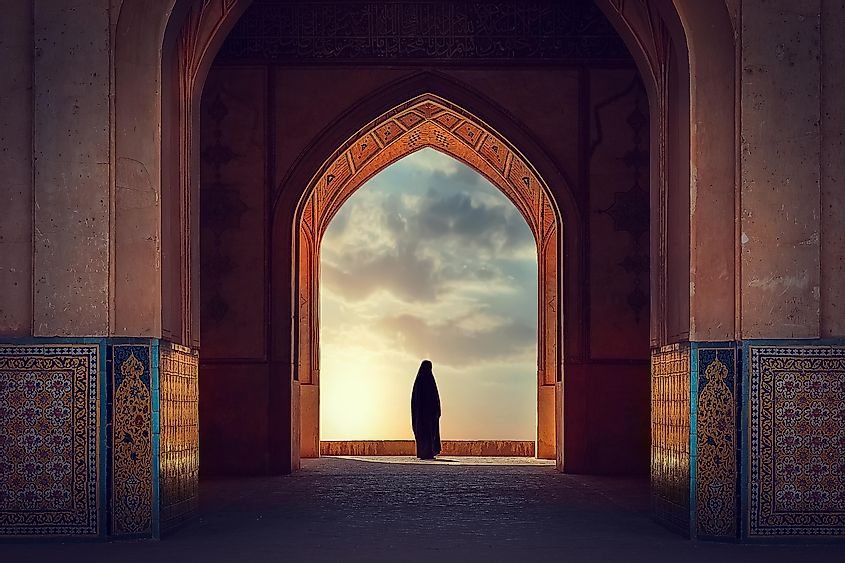
Islam is marked by its adherence to discipline, in which abstinence from worldly behaviors as well as observance of daily rites is rigorously demanded. Notable historic discoveries have come from Islamic institutions, in fields such as algebra, surgery, architecture, and even coffee. The two main branches of Islam that cohabitate the Muslim world are Sunni and Shia, which are said to have been divided 14 hundred years ago over an issue of succession.
3. Hinduism
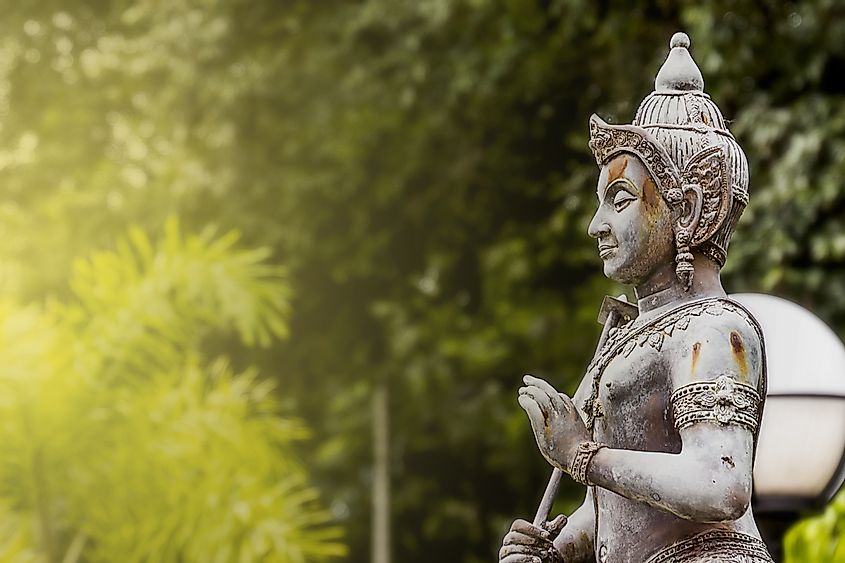
The origin of Hinduism, a religion with 1.1 billion followers, is difficult to pin down because it began as an amalgamation of different beliefs. Officially formed between 2300 B.C. and 1500 B.C., the Indus Valley near modern-day Pakistan is the location where it first blossomed. Typically thought of as the 'religion with 33 million gods,’ the majority of Hindus worship one god alone, albeit they accept the existence of other gods.
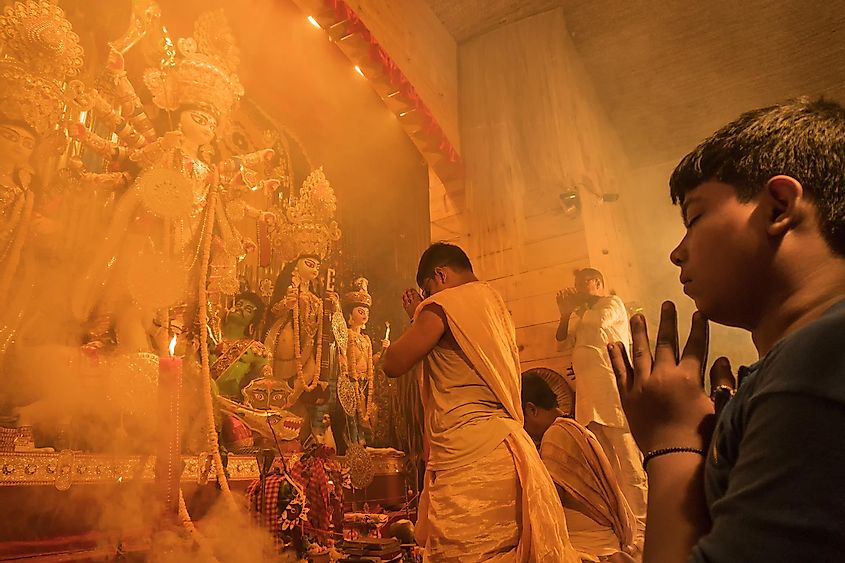
Core values are ones such as Karma and Samsara. Karma dictates that the moral sum of the deeds we produce will be returned to us eventually, through consequence or reward. Samsara is a model for the cyclical nature of life, a symptom of which is reincarnation. Historical contributions to the world include mathematics, astronomy, and yoga.
4. Buddhism
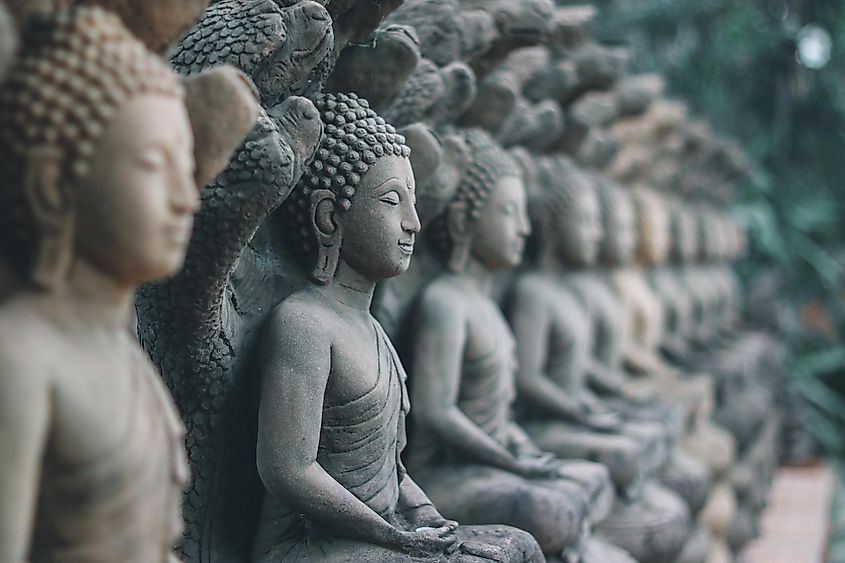
A prince who renounced his wealth to pursue wisdom, the Buddha is an eclectic figure from the 5th century B.C. who brought together many different beliefs in order to develop a revolutionary philosophy on human identity and purpose. The goal is to achieve an enlightenment called Nirvana through meditation, kindness, and hard work. Values revolve around the absence of an ‘essential self,’ impermanence, and the reality that life is suffering. Therefore, a primary aim for mankind is the elimination of suffering in all its forms.
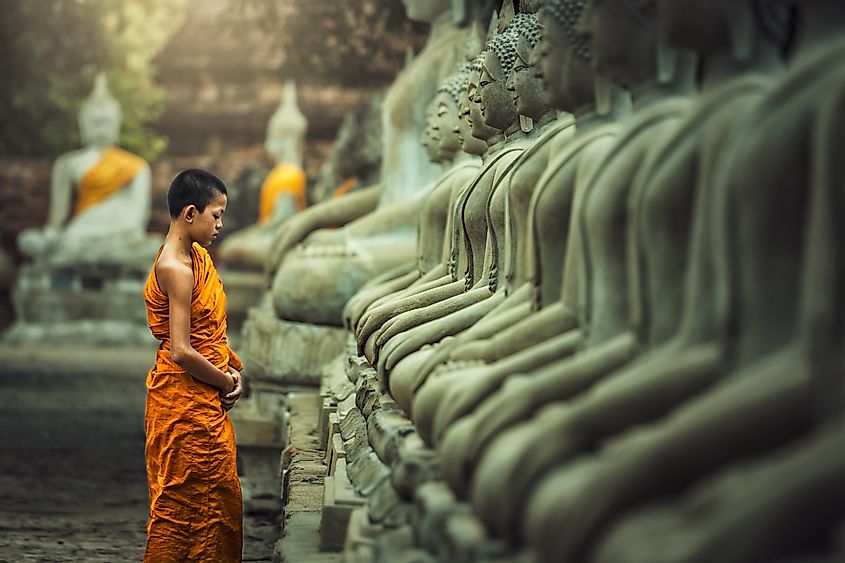
The orange tunic, which the monks famously wear, represents a fire that burns away impurities. Two different sects exist, the Theravada Buddhists and the East Asian Buddhists, which differ in their selection of texts. At 500 million followers, Buddhism has been lauded for its effective use of an egalitarian philosophy that has worked to dismantle caste systems worldwide.
5. Shinto

Shinto, the ever-nebulous religion of Japan, has no settled doctrine or origin story. At its simplest, Shinto beliefs gravitate towards a fluid idea of kami. Kami are the personified concepts of wind, rivers, trees, and other natural elements. Due to the influence of Christianity, the concept of an afterlife was introduced, and some followers believe humans become kami after death.
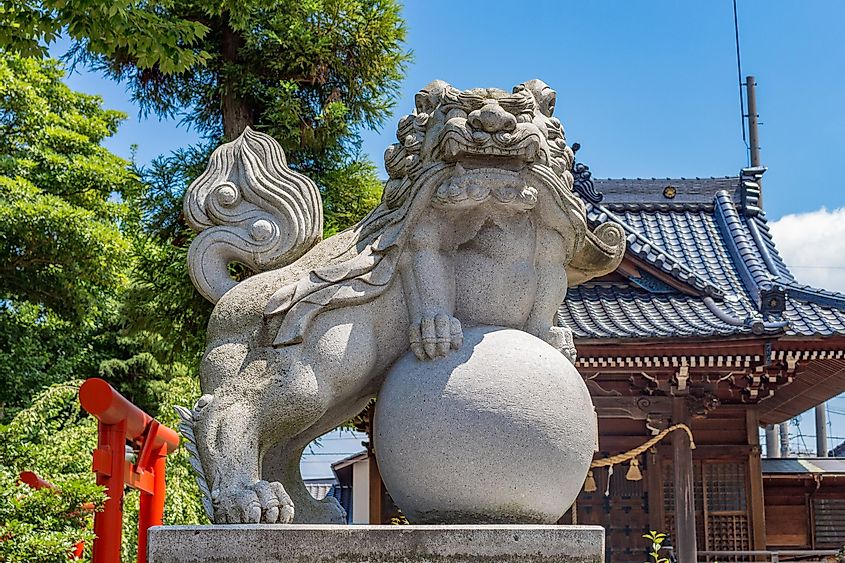
The religion became more concrete in the events surrounding WWII, wherein the Japanese government instituted it as a state religion that aimed to venerate the emperor as a living, human kami. Otherwise, Shinto beliefs have developed since the 6th century as a nature-focused series of scattered beliefs that merged and then split with Buddhism as well as Confucianism. With 104 million followers and a focus on ancestry and nature, the belief can be understood through indulging in Japanese storytelling, wherein the horror of 20th-century industry threatens the magic of the world around us.
6. Sikhism

In 1469, the first Guru of Sikhism was born. Guru Nanak, a native of northeast Pakistan native, migrated to India and began to record and teach his revelations during journeys around the Islamic and Hindu world throughout the early 1500s. These revelations are few but substantial: Share with others, earn an honest living, meditate on God’s name, and resist negative behaviors.

Currently, the 25 million followers organize to promote universal egalitarian principles and believe that all faiths ultimately worship a singular divine being. A well-known example of this mindset is the tendency for Sikh temples to have a community kitchen dedicated to serving meals to anyone, for free. Sadly, Sikh history is marked by political difficulty and deadly rebellion against intolerant regimes. Several of the original Gurus, leaders who carry on Nanak’s spiritual empowerment, were executed by the state authority of their time.
7. Judaism

The original Abrahamic faith, Judaism, has been practiced for over 3500 years. Archaeological evidence confirms the existence of two adjacent Jewish kingdoms between 900 and 700 B.C., and the religious texts assume a confederacy of 12 tribes united in faith before that. Each tribe, and subsequent kingdom, claims descent from Abraham.
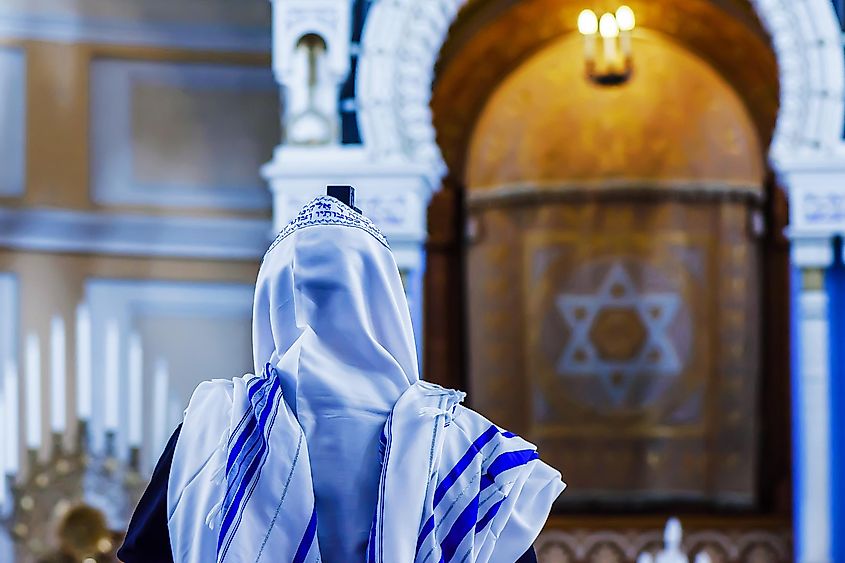
The faith is monotheistic, in contrast to the ancient Levant’s polytheistic history. The devotion to their god, “Yahweh,” comes from his commitment to them as a chosen people, while constantly being urged by him to return to pious behaviors. Unlike Christianity and Islam, there is no detailed assumption of the afterlife other than a deep sleep called “Sheol.” Roughly 14 million Jews continue to practice the faith today, despite extreme persecution during World War II.
8. Taoism

A ‘one-size-fits-all’ belief, Taoism is a series of principles and axioms that attempt to guide followers towards balance. Two ‘persons’ sit at the heart of Taoism: the Tao itself and Laozi, a 6th-century contemporary of Confucius. Laozi and his school decreed that the Tao is undefinable, and can only be engaged through lived experience. It is a powerful force that runs throughout the universe and encourages “De,” which is adherence to the Tao.
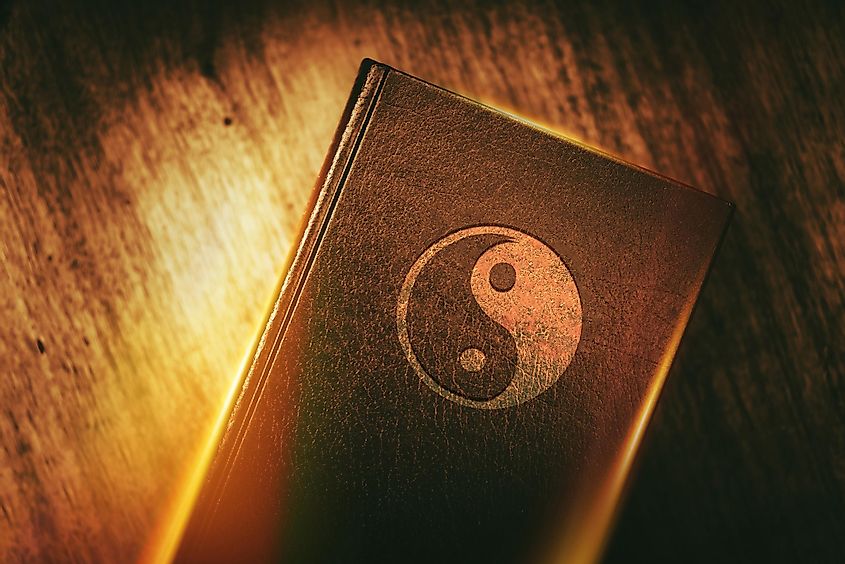
The Tao is the natural order of the universe and is not worshipped as a god, and it is believed that humans merge with the Tao upon death. By adhering to the lifestyle of De, the 12 million followers of Taoism trust that they will experience less suffering. Inaction and a passive effort to synchronize with this balance is the key differentiation from the more intentional Confucianism.
9. Confucianism
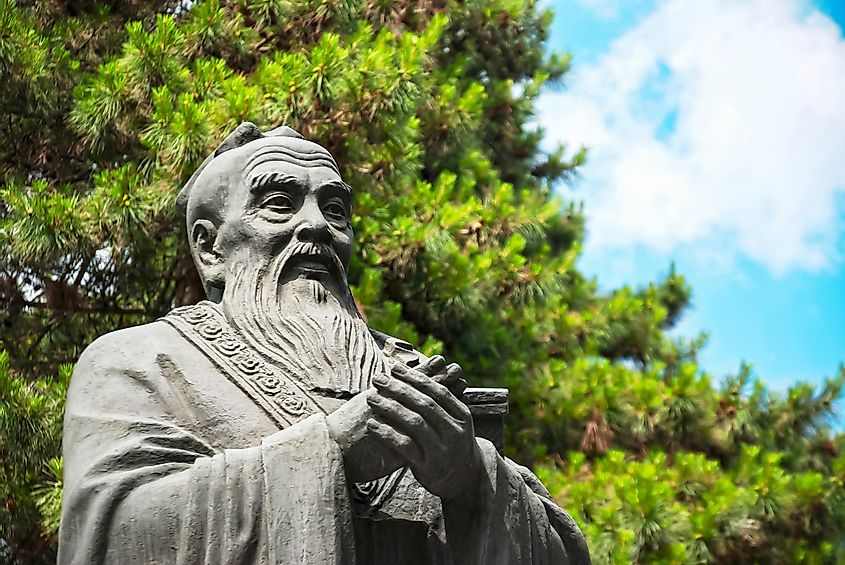
Despite dancing around spirituality, leading many to consider Confucianism as a philosophy only, the religion establishes a theological understanding of the Universe, albeit an impersonal one. In it, the priority of humankind is to strive to synchronize with the order of the universe in order to achieve oneness with heaven for the tranquility of community and self. This order is defined by “Tiān,” a non-speaking ‘God of Heaven’ which can be best translated as “the way things are.”
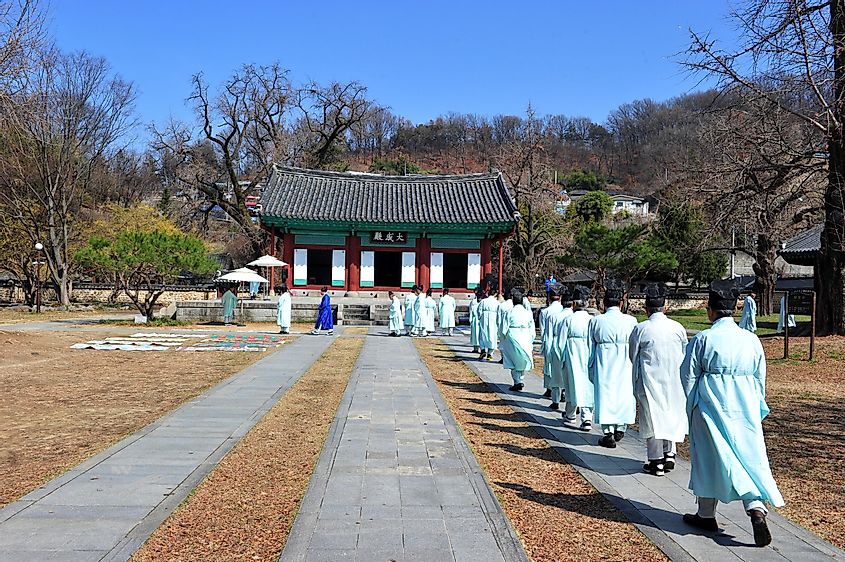
Moreover, Confucianism argues that the way humankind should act is a way that conforms to the most evident morals: charity, obedience to mentors, humility, and compassion. All people are inherently good and must work to realign themselves with that nature. Since its establishment by Confucius and his writings in 500 B.C., the faith currently hosts over 6 million followers.
10. Caodaism
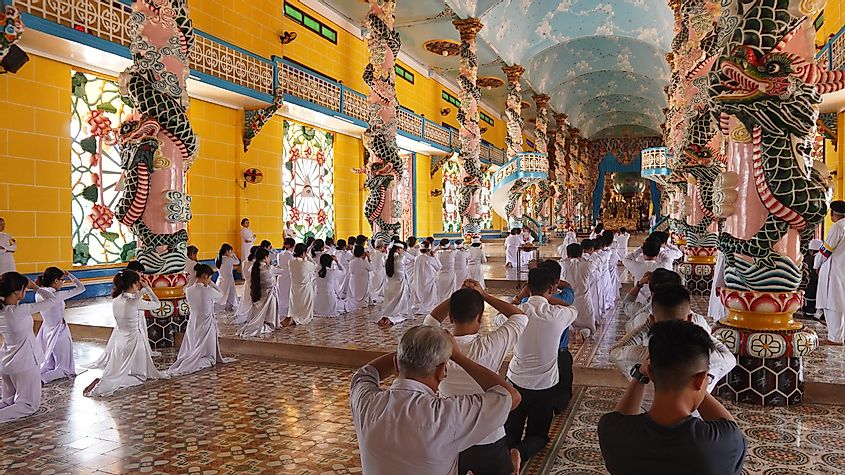
A melting pot of many of the world’s largest faiths, Caodaism is a recent creation originating in 1921 when a vision came to an assembled group of mediums located in Vietnam. Nearly 4.4 million believers align themselves with the core tenets that teach harmony, unity with a monotheistic deity, reincarnation, and anti-materialism. Besides the association with Buddhism, Confucianism, and Taoism, Caodaism asserts the existence of several creator spirits as well as devils led by a being resemblant of Satan; this is a dynamic similar to Abrahamic faiths.

Naturally, to achieve heaven, a soul must evolve its spirit through good behavior during successive reincarnations. The belief was influential in Vietnam during the 1930s, not only because of its quick spread, but also due to the anti-colonialist sentiment that it cultivated against the French occupation. In 1997, after being banned for 22 years, the practice of the religion was permitted in Vietnam once again.
The shocking reality about each faith, side to side, is that they tend to possess more similarities than differences. For instance, students of each belief spend years honing their self-control and ability to grow through introspection. Countless tales can be heard of disciples who swear by the fact that these faiths transformed them into proud and more joyful members of society. Furthermore, the scholars of each belief are happy to borrow from each other when the opportunity presents itself. For example, famed Christian theologian C.S. Lewis cleverly integrated the concept of Tao into his own writings. After examining the history and core values of each faith, it is evident that the secret to how they might morph and evolve further is buried in the future.











